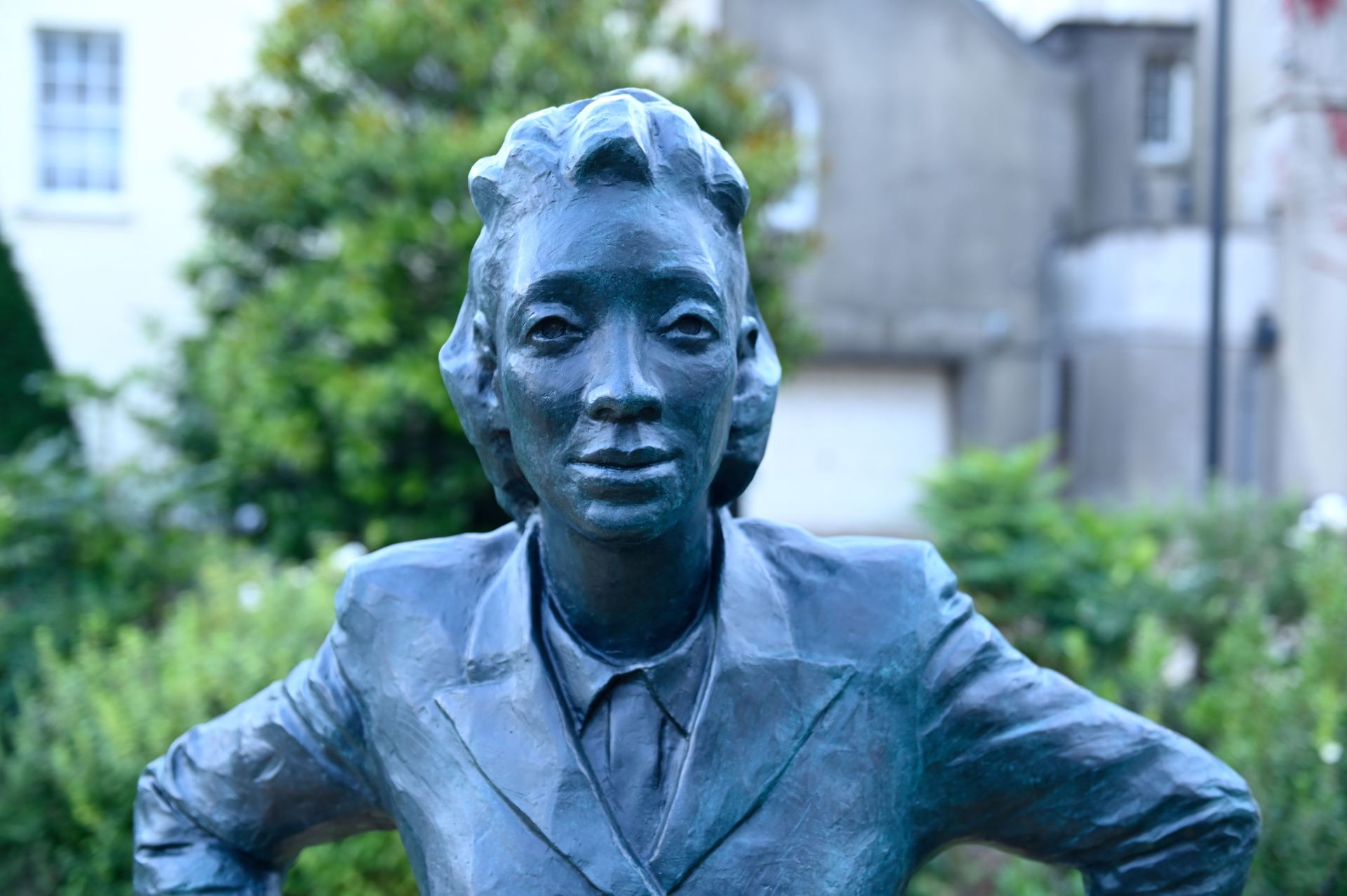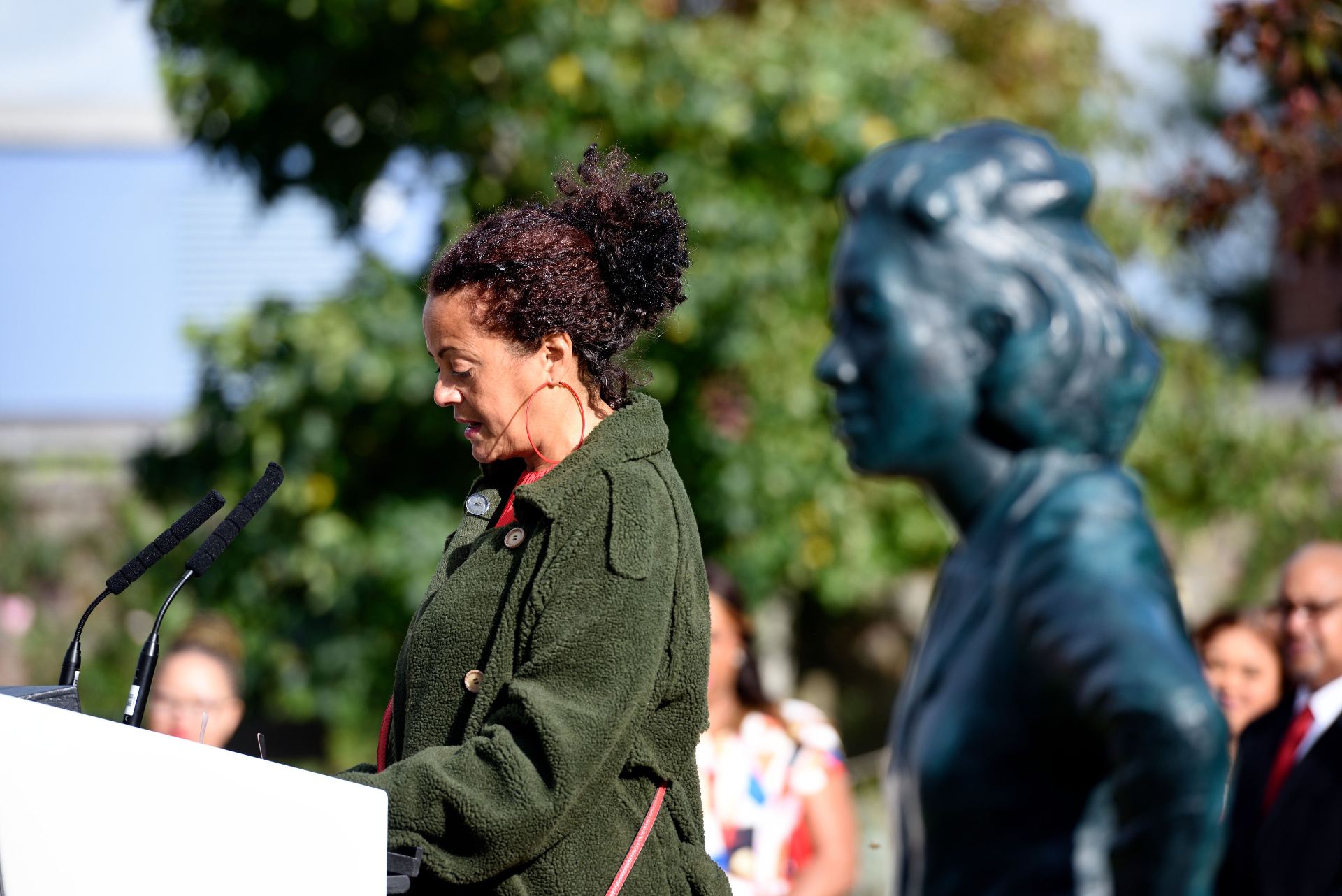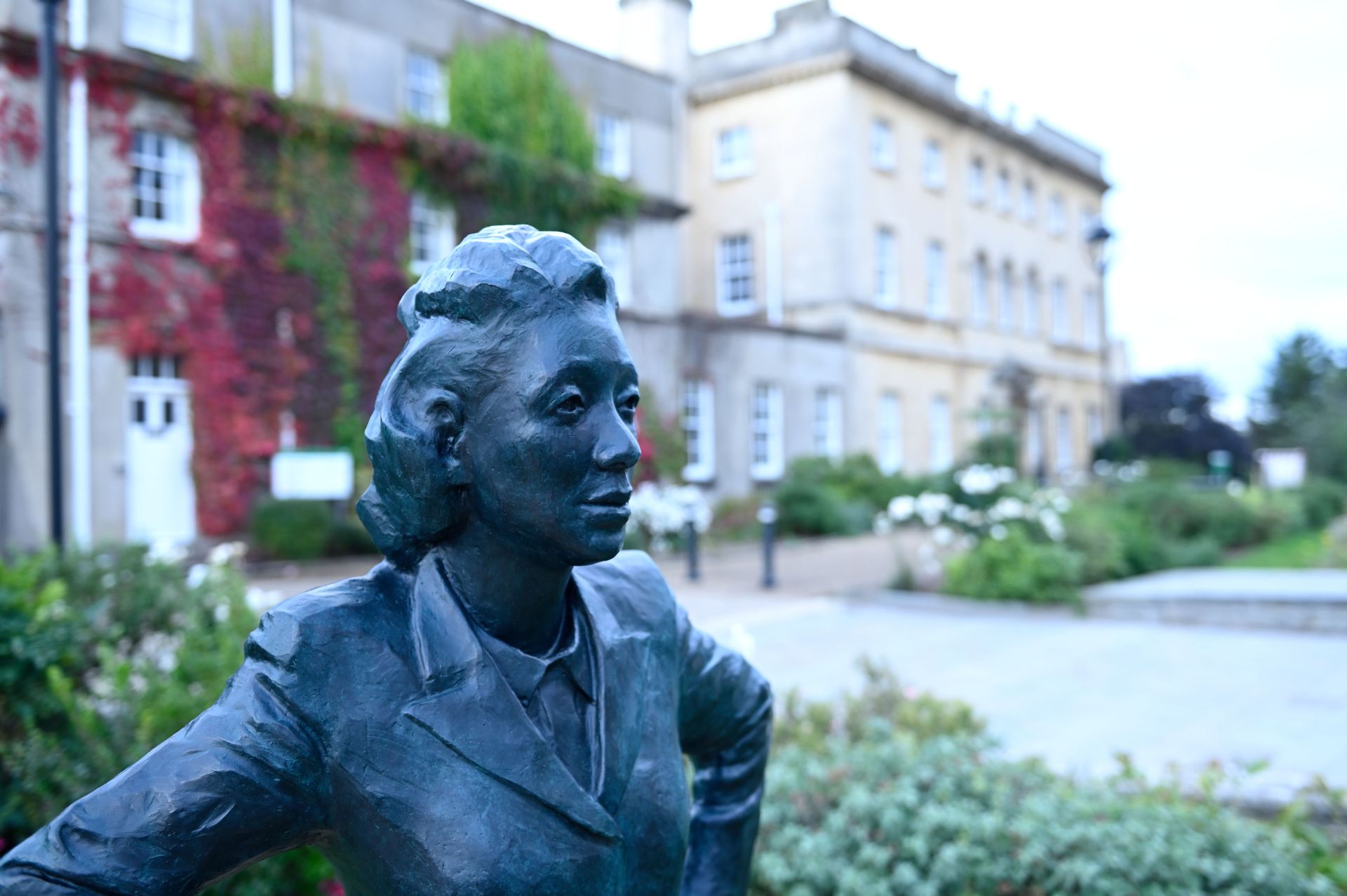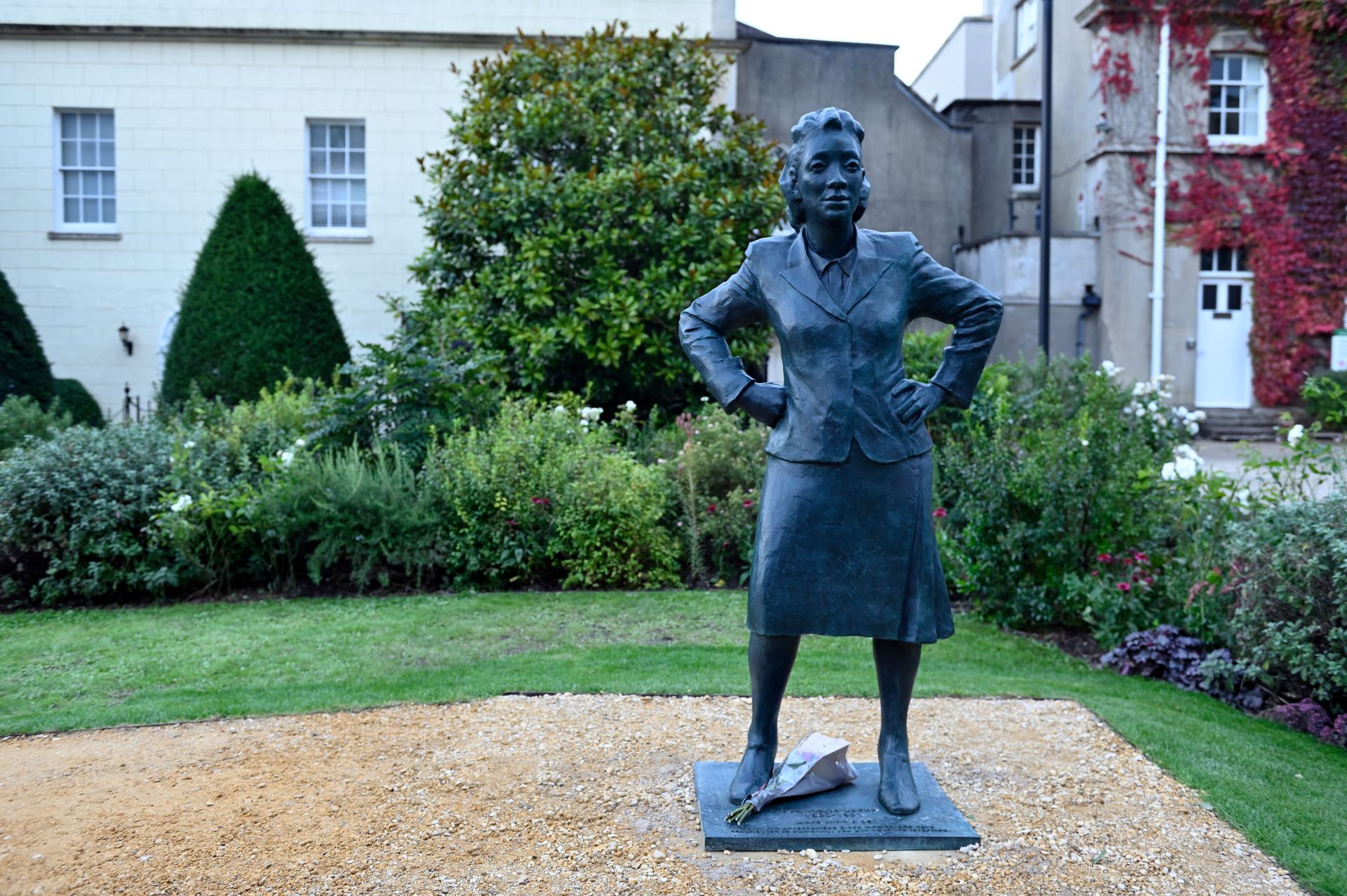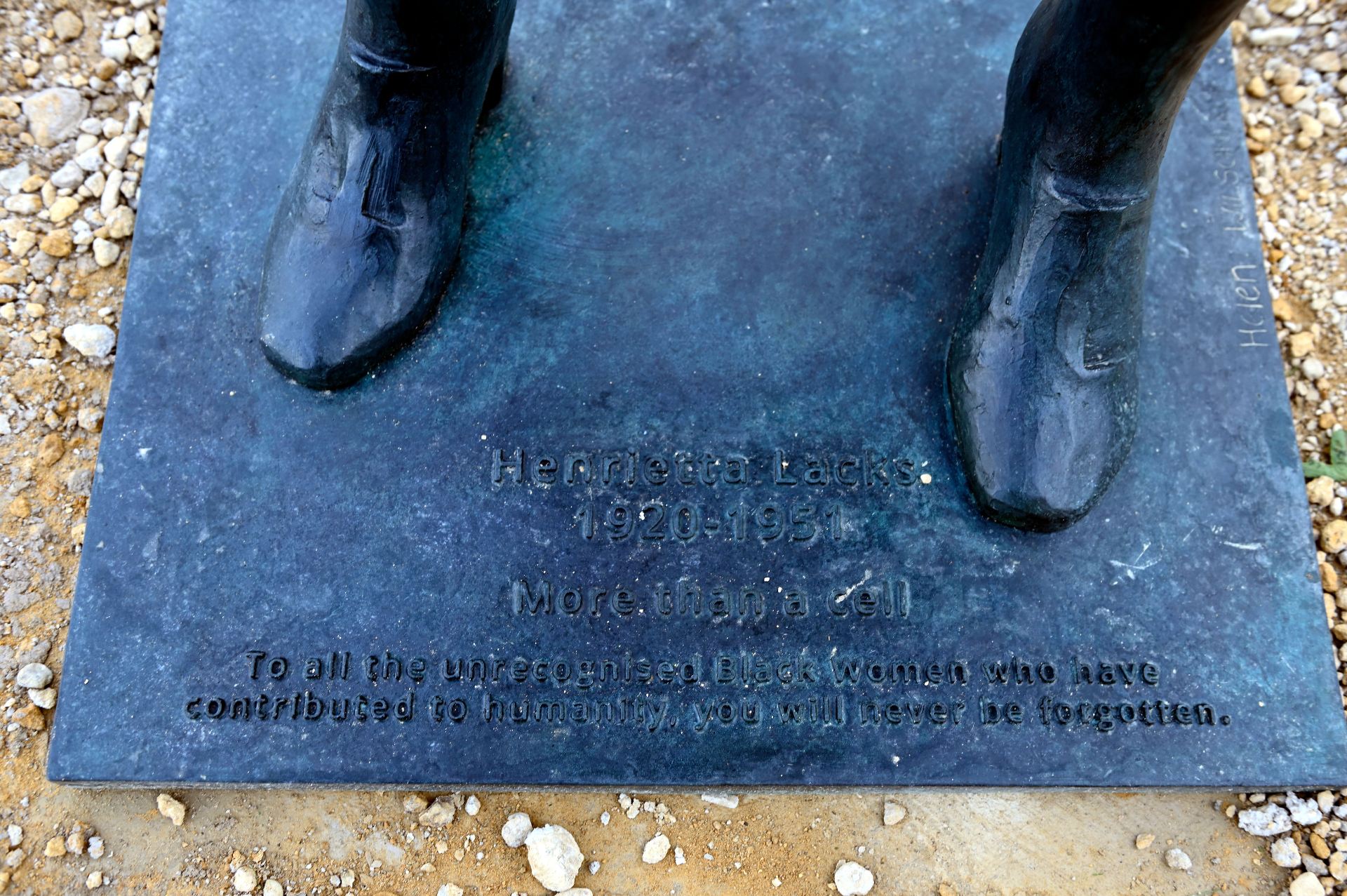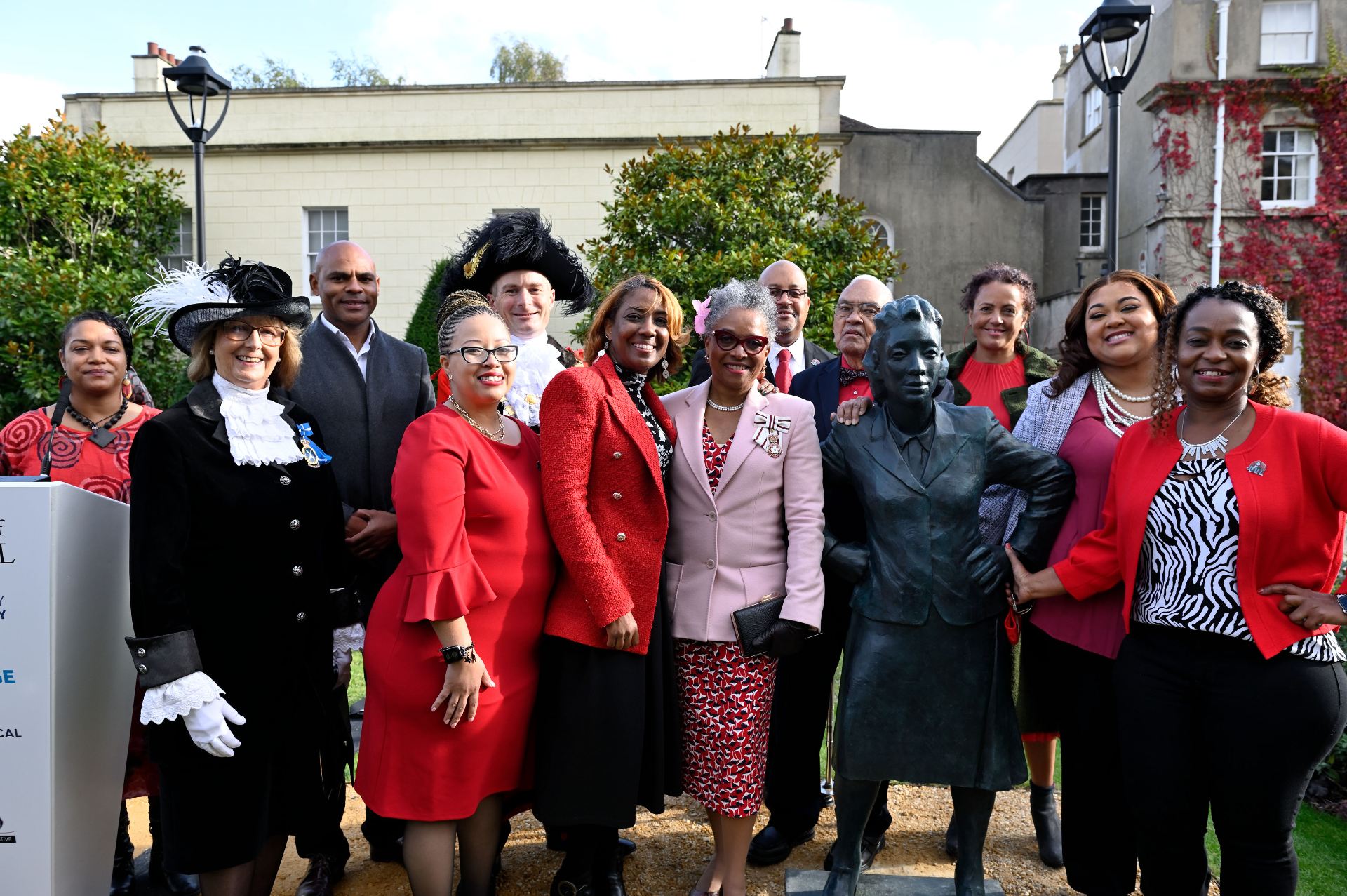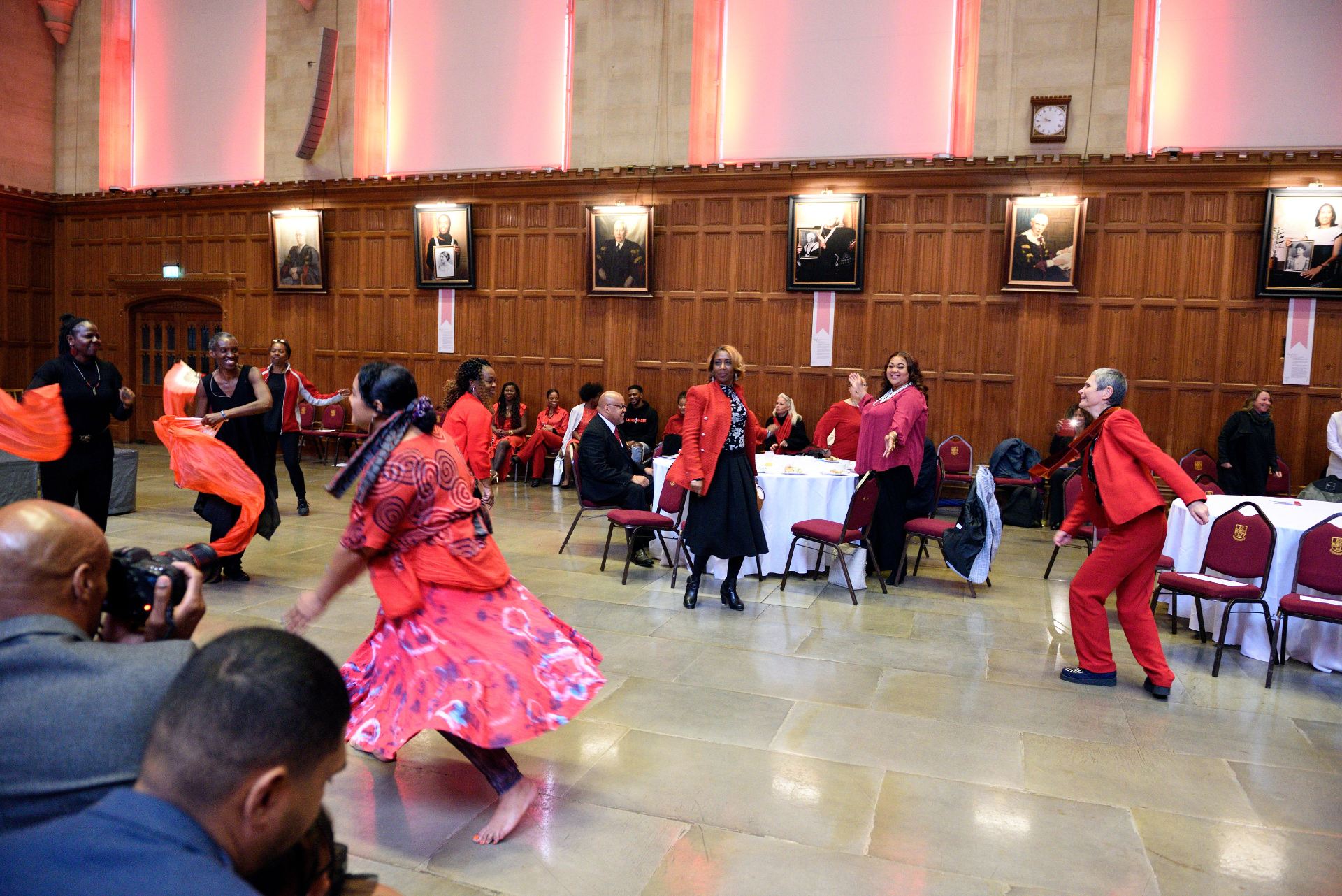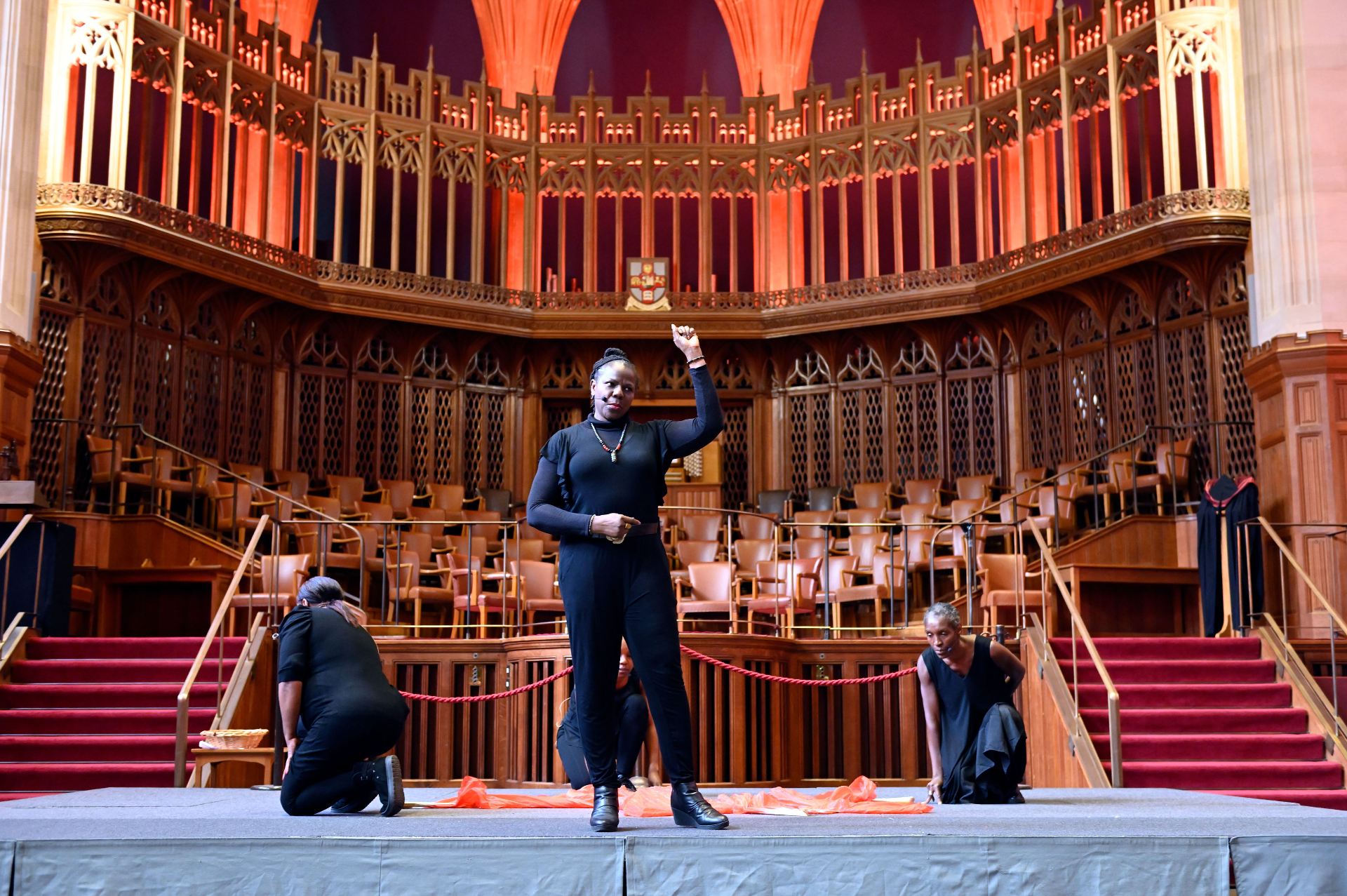A life-size bronze statue of Henrietta Lacks, an African American woman whose cells were the first ever to survive and multiply outside the body, and whose use changed the course of modern medicine, was unveiled at the University of Bristol by members of her family to honour the 70th anniversary of her cells first being used, in October 2021.
The statue, commissioned by the University earlier this year, is located in the heart of the campus precinct next to Royal Fort House. It is the work of Bristol-based artist Helen Wilson-Roe.
Wilson-Roe worked with a life model, archive images of Henrietta Lacks and members of the Lacks family, to create the artwork. The figure was sculpted in clay and later cast in bronze.
This commission follows the exhibiting of two of Wilson-Roe’s portraits of Henrietta Lacks and Cllr Cleo Lake, Bristol’s first Black female Lord Mayor, which have been on display in the Wills Memorial Building since October 2020.
As a child growing up in Bristol there were no statues of Black women that I could identify with. So, knowing that my children and their grandchildren and great grandchildren will be able to see Henrietta’s statue, is just fantastic, especially at this time when Bristol is starting to address its past.
Henrietta Lacks was a young woman, a mother and a wife, who died in 1951 of an unusually aggressive form of cervical cancer. During surgery, a sample of cells was taken from the tumour and was sent to a laboratory where they were found to be the first living human cells ever to survive and multiply outside the human body.
Henrietta Lacks’ cells were taken without her or her family’s knowledge or consent, and it was only in 1975 that by chance the family found out about her legacy. Lacks’ story therefore holds great significance as a reminder of these past injustices and of the importance of advancing racial equity in health and science today.
Because Henrietta’s cells were able to proliferate indefinitely, they formed the first scientifically defined ‘immortal’ human cell line, opening the door to all kinds of experiments and research on cell behaviour.
These cells made possible some of the most important medical advances of all time including the development of the polio vaccine, chemotherapy, gene-mapping, IVF and cloning.
They became known as HeLa cells – taking the first two letters of Henrietta’s first and last names. HeLa cells are used in almost every major hospital and science-based University in the world, including the University of Bristol where they have been used most recently, for COVID-19 research.
As the world commemorates 70 years since Henrietta Lacks’ HeLa cells changed the world, we also reflect on my grandmother’s untimely passing. It is only fitting that she be memorialised to educate future generations on her legacy and the importance of advancing health equity and social justice for all.
Many of our biomedical science researchers whose work uses human cells have used Henrietta’s cells in their research or with collaborators, including myself. We all owe Henrietta an enormous debt of gratitude.
I am absolutely delighted to be able to host this beautiful statue of Henrietta on our campus so we can visually honour her contribution to important discoveries we have made in Bristol over the last 70 years. I feel intensely proud that her family have been so supportive in our doing so. Her statue will do so much to raise her profile with our students and also with children in our local communities.
Henrietta Lacks’ legacy to science research and health care globally cannot be underestimated. This statue celebrates the impact her cells have made to our research here in Bristol, and indeed research around the world.
The Lacks family have a unique relationship with Helen Wilson-Roe, who is a local artist and wished for her statue to be in Bristol. We are pleased to be able to give it a permanent home right here on our campus.
The statue also marks a significant step in addressing the lack of representation of women, and women of colour, in public artwork in our diverse multicultural city. As public art, the local community are most welcome to visit to see this wonderful statue for themselves and learn more about Henrietta Lacks and her legacy.
Helen Wilson-Roe
Bristol-based artist Helen Wilson-Roe addresses social and cultural issues that are particular concerns to disenfranchised and culturally diverse communities, whose voices and stories are rarely told in mainstream art spaces, though they have universal significance.
Helen Wilson-Roe has been interested in and researching the story of Henrietta Lacks for over 23 years. Wilson-Roe has made a documentary A Brush with Immortality which provides insight into the history of Henrietta Lacks, the plight of the Lacks family, the impact of HeLa cells on medical science, how science and art can work together to enhance public understanding of research and the minefield of ethical concerns surrounding human tissue donation and anonymity.
Wilson-Roe has recently painted portraits of Cleo Lake, the first Black female Mayor of Bristol 2018-2019. Wilson-Roe was named in the Awards list “19 Black women who have made a difference” in 2019 and 2020 and is also featured in the school curriculum created by Black Bristolians Pack/Bristol One Curriculum
Further resources
- Find a range of resources relating to the Henrietta Lacks statue and her legacy here
- The University has been collaborating with the Lacks’ family-led HELA 100: The Henrietta Lacks Initiative, which began during her centennial year and features a worldwide education and advocacy tour. The statue unveiling was live streamed around the world as part of the HELA100 Colloquium, commemorating 70 years since Henrietta’s incredible HeLa cells changed the world and her untimely death on 4 October 1951. Attendees learned about the worldwide advancements made by the cells and Henrietta’s descendants to educate future generations on the impact of her immortal HeLa cells while promoting health equity and social justice.
- Dr. Tedros Adhanom Ghebreyesus, Director-General of the World Health Organization (WHO), welcomed The Lacks Family for a special dialogue at WHO headquarters in Geneva, acknowledging the legacy of Henrietta Lacks, her contribution to revolutionary advancements in medical science and honored the late Henrietta Lacks with a WHO Director-General’s award, recognizing her world-changing legacy.
Location and access
Royal Fort Gardens, Tyndall Avenue, BS8 1TH UK
- Google Maps location: Royal Fort Gardens, Bristol, BS8 1UH
- What Three Words Location: ///swift.cove.tube
Henrietta Lacks is free to visit and open to all. It is permanently sited outside Stuart House, at the end of a short length of new gravel pathway within an area of lawn in Royal Fort Courtyard gardens. It is located within the Tyndall’s Park Conservation Area and is surrounded by a number of listed buildings.
Royal Fort Gardens are open every day of the year. Opening times may vary during the summer months and holidays are at the discretion of the University.
There is level access into Royal Fort Gardens and the area around the statue.

